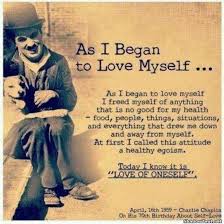
Tag Archives: healthy relationships
Some believe love to be the most powerful force on the planet. Consequently, many believe love is the best solution to every situation. Fundamentally, that seems true, as long as love of self is kept high on the list of who or what to love. In other words, no, we can’t love others too much, but we can inadequately love ourselves.
The studies outlining the measurable, positive effects of love are extensive, from love shown to orphaned babies and love experienced in faith communities, to love creating bonds that literally carry information.
It is my firm belief that love will eventually prevail. And this notion is being studied scientifically by people like Gregg Braden. Mr. Braden’s work suggests the sign wave of love expands over time. To the contrary, it appears the sign wave of fear contracts with time. One could deduce, then, that love literally will prevail.
But since that extrapolation may not be realized for a while, we’re left wondering how best to love.
Our world, our selves, seem so often full with pain. Or is it suffering we feel? What’s the difference? The difference is choice. In this blog we’ll explore that difference and how choosing might help.
This human thing we do has held me for sixty-one years. Of those years, thirty-five have been spent as a psychotherapist supporting folks in all sorts of pain and suffering. In this blended process of life and profession, a distinction between pain and suffering has developed.
It seems pain comes with life. There’s the literal pain we feel when we are hurt physically. I remember that pain when I was four or five. My little legs took off and jumped into a pile of dirt in a field across the street. We lived in Florida at the time. There was a stake hidden in the pile that gashed me.
Then there’s the affective pain we feel when we are hurt mentally or emotionally. I remember that hurt when I saw my dad cry for the first time after his mother died. We were driving in our station wagon from the funeral. My pain was seeing this powerful figure in a light that scared me.
There are countless ways we may feel pain physically: broken bone, headache, hunger, disease, sore muscle, gunshot, arthritis…on and on.
There are countless ways we may feel mental or emotional pain: heartbreak, news of job loss, victimization through abuse or prejudice, addiction, and so many more.
So how is this pain different from suffering?
All the physical, emotional and mental pains just listed (sad as it might be) are part of the world we live in. And when one of them occurs, it’s natural to feel pain. Injured in a car accident, you’re going to feel physical and emotional pain. It’s what we humans do. The pain is an automatic response designed to teach us. It’s the idea that you don’t put your hand on a hot stove more than once. This process of growth through pain is beyond our control. Without physical pain, we would not survive as a species.
Similarly, we need the pain of all our difficult emotions and the pleasure of all our positive emotions to tell us what direction helps us and what direction hurts us.
In this sense, physical, emotional, mental and perhaps even spiritual pain intends to guide us, all be it uncomfortable learning. And when our systems are working well, the initial pain is all we need to be pointed in a better direction.
This is where the distinction between pain and suffering begins to emerge.
A number of years back, I led a weekly support group for young physicians. At one meeting a doc came in late, clearly upset, and soon shared deep concerns about “a mistake” made with a patient earlier in the day. That doctor was in emotional and mental pain. We were all present and listening. The doctor’s reactions were real and reasonable.
But the doctor’s concern expanded into self-chastisement that wouldn’t let up. Eventually I simply asked, “When did you figure out what you would have done differently?”
“Almost immediately,” the physician responded.
Indirectly, I was teaching about the difference between pain and suffering. That doctor felt pain as soon as the negative impact on the patient was realized. And right after, that same pain helped that doctor figure a better way. This is the pain that comes with life, and guides us. But that physician’s rumination about the “mistake” was becoming suffering.
Pain is a now experience. Suffering is thinking about pain.
If you’re alive, you experience pain. Suffering, or thinking about pain, is optional.
Pain is the true teacher. Suffering is pain in sheep’s clothing.
As strange as it may sound, pain has something to give us. Suffering only takes: it takes our attention, it takes our time, it takes our joy. There’s no cheese down that path.
We will all make mistakes. And if those mistakes have negative consequences for us or others, most will feel some degree of discomfort and maybe even pain. But if we find ourselves hours, days or weeks later thinking through something we did or didn’t do or should have done, we are now suffering.
Suffering in this way can also take the form of thinking and rethinking something someone said or did to us. Yes, the initial injury hurt and caused pain. But if we are still thinking about it days later, we are creating suffering for ourselves. Suffering is a close cousin to worry and anxiety, all of which are fear’s offspring.
Two monks were given the privilege of walking from their monastery to the neighboring village for supplies. Before leaving they were strictly instructed not to speak with anyone, especially women. More importantly they were told not to touch women.
While getting supplies in the village, it began to rain…a lot. The dirt roads were now running with mud. Heading out of town and still in their silence, the monks came upon a well-dressed woman stranded on a corner. One monk handed his supplies to the other, picked up the woman and carried her across the road to drier ground.
Miles later, the stunned monk broke the silence: “We aren’t to speak with women, much less touch them, but you carried her across the road!”
“And I put her down miles ago. You are still carrying her,” said the other.
When we can’t put the initial pain down, we are suffering. Nothing wrong with it. It just steals our energy and keeps us unavailable to the life before us.
It seems that most pain has a shelf life. Eventually the event or circumstance that created our pain passes, and a more comfortable way is available once again. And while pain has a shelf life, suffering doesn’t. Suffering will be with us as long as we create it.
That’s right. Life creates pain. We create suffering. And we create suffering by our choices.
First of all, it’s important to say, there is no shame in suffering. If you are suffering, the last thing you need is for someone to tell you, “You did this to yourself.” Your suffering may hardly be bearable. And now you’re hearing you may be creating your suffering.
But if we create our suffering, that means we can uncreate it. If suffering is a product of my choice, perhaps I can choose something else.
Psychiatrist and concentration camp survivor, Viktor Frankl, MD, PhD, wrote about fellow survivors in his classic, Man’s Search For Meaning, who found a way to not suffer in the face of daily pain. Even though many of them had family members tortured or killed one after the other, these same people scrawled images of butterflies and flowers on the wooden walls of their horrific barracks.
It is your birthright to feel whatever you feel. But when you tire of suffering, here’s a simple, guiding principle to help you move forward. When you find yourself emotionally, mentally, or spiritually uncomfortable, but the moment itself offers no threat to your comfort, you may be doing one of three things which can produce suffering:
1) Thinking about something painful from your past
2) Imagining something painful in your future
3) Comparing yourself to someone else
The solution: consider the choice to lovingly bring yourself out of your mind, into your body, and into the moment that is full of life, waiting for you once you release the suffering.
Death of a loved one is hardship. In the hit movie, Trainwreck, Amy Schumer’s character, also named Amy, struggles to connect deeply with others, grieves her father’s death, and begins a healing journey. Let’s take a look at all three aspects of the film, and life.
Endorsed by two New York Times bestselling authors.”

